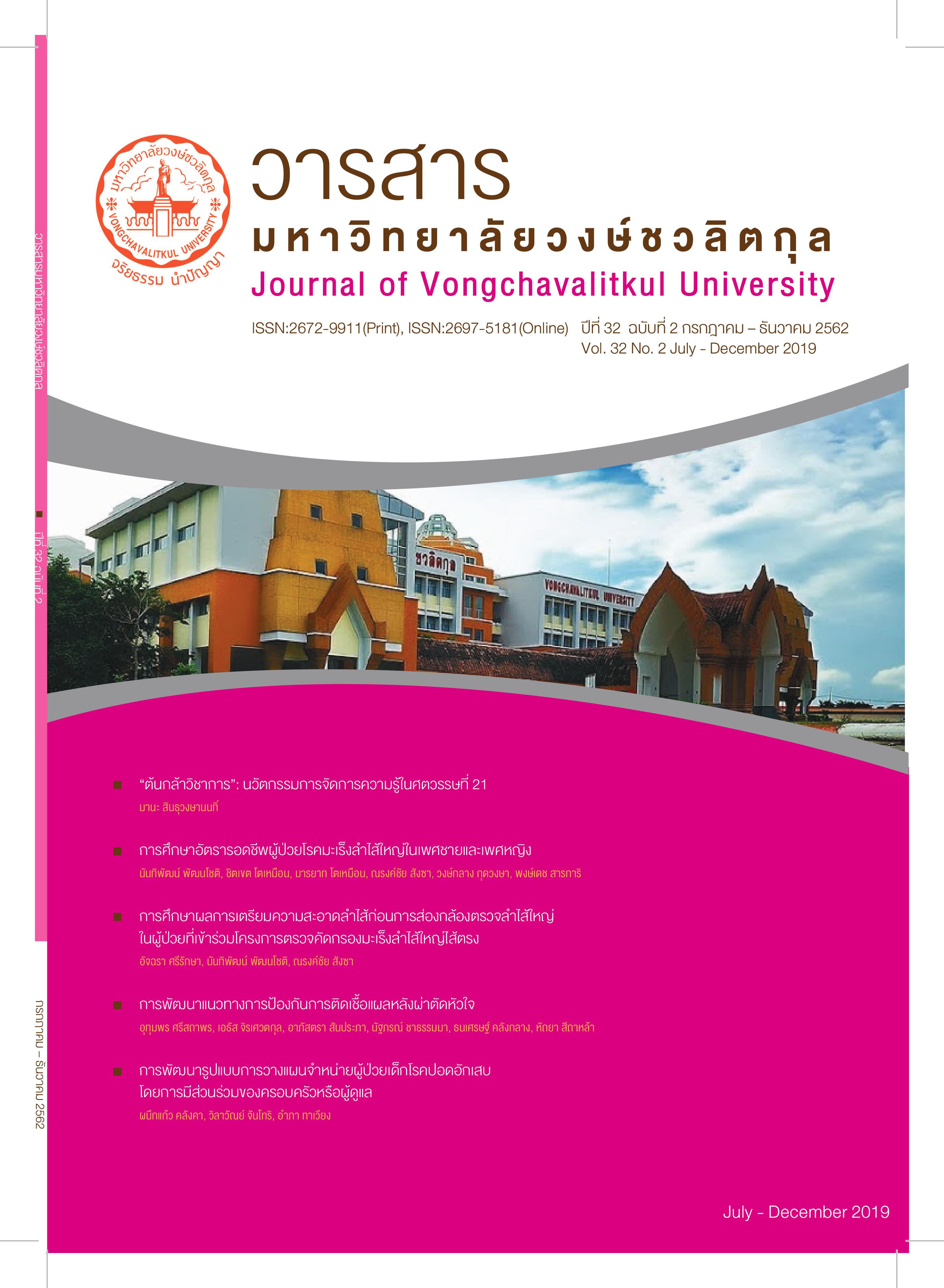Feasibility Study of High Entropy Alloy (HEA) Production Containing Al-Cr-Cu-Fe-Ni by Using Direct Electric-Arced Method
Main Article Content
Abstract
High entropy alloys (HEAs) are novel materials containing more than five elements in equimolar ratio compositions providing complex and versatile microstructures and mechanical properties with different conceptual from previous alloy materials. However, preparation and production methods of HEA are difficult melting techniques and not economically reasonable. Many previous researches produce HEA specimens by using high purity raw materials and sophisticated methods such as laser metal deposition and spark plasma sintering.
Objective: The aim of this study was to propose the method for HEA production by using the simple melting method combination with the locally available raw materials producing HEAs serving applications those requiring good combination of strength and hardness.
Methods: Main elements used for producing HEA specimen in this study were consisting of Al, Cr, Cu, Fe and Ni in equimolar concentration. HEA samples were prepared in several melting weight of 200 g, 100 g, 50 g, 40 g, 30 g and 20 g which each condition was melted by using direct arc method in refractory crucible.
Results: Microstructural investigation by optical microscope and scanning electron microscope (SEM) observing from 100 g, 40 g and 20 g samples showed highly segregate dendritic structure of the AlCrCuFeNi HEA. As-cast structure revealed lamellar matrix structure consisting several alloy phases including Cu-Al rich phase, Fe-Cr-Ni and Cu-Al-Ni-Fe phases and rod-like chromium carbide dispersed in the matrix structure. Large amount of carbide presented in all samples especially in 100 g HEA sample due to carbon dissolved from graphite electrode during direct arc-melting combining with chromium from raw materials resulted in chromium carbide. Microstructures of small weight samples showed lower amount of carbide formation as the shorter arc melting time which limiting the carbon from electrode dissolving into the melt. Microhardness test results of all HEA samples were superior to other commercial alloys. The localized microhardness test of 50 g HEA as-cast sample showed the highest hardness data in the range of 707.4 – 819.9 HV1 which was much higher than those of hot-work tool steels.
Article Details
References
2. Chen, X., Yan, L., Karnati, S., Zhang, Y., & Liou, F. (2017). Fabrication and Characterization of AlxCoFeNiCu1−x High Entropy Alloys by Laser. Metal Deposition. Coatings, 7(4), 47. https://doi.org/10.3390/coatings7040047
3. Gangireddy, S., Gwalani, B., Soni, V., Banerjee, R., & Mishra, R. S. (2019). Contrasting mechanical behavior in precipitation hardenable AlXCoCrFeNi high entropy alloy microstructures: Single phase FCC vs. dual phase FCC-BCC. Materials Science and Engineering: A, 739, 158–166. https://doi.org/10.1016/ j.msea.2018.10.021
4. Guo, S. (2015). Phase selection rules for cast high entropy alloys: an overview. Materials Science and Technology, 31(10), 1223–1230. https://doi.org/10.1179/1743284715y.0000000018
5. Li, C., Li, J. C., Zhao, M., & Jiang, Q. (2009). Effect of alloying elements on microstructure and properties of multiprincipal elements high-entropy alloys. Journal of Alloys and Compounds, 475(1–2), 752–757. https://doi.org/10.1016/ j.jallcom.2008.07.124
6. Murty, B. S., Yeh, Jien-Wei., & Ranganathan,S. (2014). High-Entropy Alloys. Butterworth-Heinemann.
7. Yeh, Jien-Wei. (2006). Recent progress in high-entropy alloys. Annales de Chimie Science Des Matériaux, 31(6), 633–648. https://doi.org/10.3166/acsm.31.633-648
8. Yeh, J.-W., Chen, S.-K., Lin, S.-J., Gan, J.-Y., Chin, T.-S., Shun, T.-T., & Chang, S.-Y. (2004). Nanostructured High-Entropy Alloys with Multiple Principal Elements: Novel Alloy Design Concepts and Outcomes. Advanced Engineering Materials, 6(5), 299–303. https:// doi.org/10.1002/adem.200300567
9. Zhou, P. F., Xiao, D. H., Wu, Z., & Song, M. (2019). Microstructure and mechanical properties of AlCoCrFeNi high entropy alloys produced by spark plasma sintering. Materials Research Express, 6(8),0865e7. https:// doi.org/10.1088/2053-1591/ab2517


